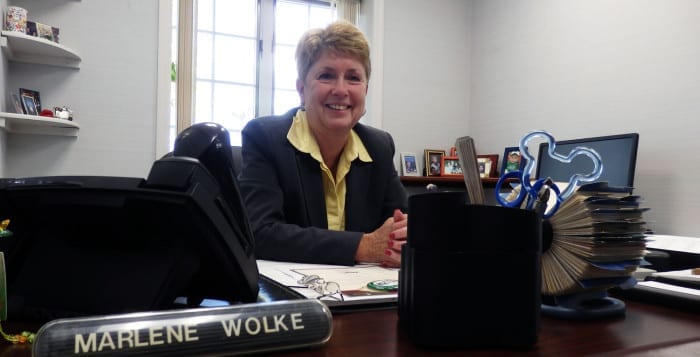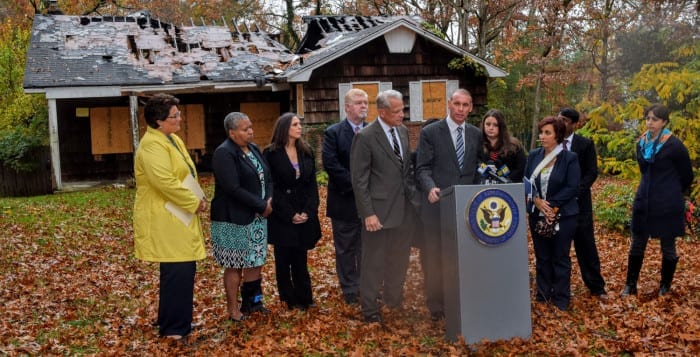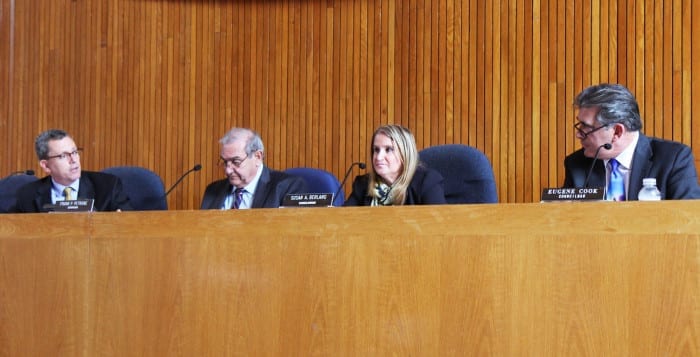Anyone looking to get to Smithtown Supervisor Pat Vecchio (R) had to get through Smithtown’s Marlene Wolke first.
Wolke’s desk literally sat outside Vecchio’s office door and she spent the past three decades welcoming the town’s movers and shakers in and out of the supervisor’s headquarters. Wolke announced she would be retiring this year, and her last day on the job was pegged for Wednesday, Nov. 25.
It’s been a long road for Wolke, across two different political parties, but she remained beside the town’s longest-serving supervisor in its 350-year history.
“He’s still here because people didn’t want to lose him,” Wolke said of her boss’s successful 38-plus years at the helm of Smithtown. “I think he’s done a great job and been a wonderful steward of the town.”
Vecchio described Wolke as loyal, competent and trustworthy as she held in confidence some of the most sensitive discussions relating to the town.
“Marlene was more than a secretary,” Vecchio said. “She really was an assistant. She was invaluable on so many occasions and I don’t know how I would have done what I do without her.”
Her office was located directly outside Vecchio’s door, where she sat in front of a big window overlooking the town. Framed photos of loved ones decorated the interior alongside stacks of various Smithtown newspapers. But even in her last week as secretary, Wolke kept it professional during an interview with Times Beacon Record Newspapers, often stopping herself to act as gatekeeper to those entering the Supervisor’s room.
Wolke’s first day on the job was July 3, 1978. When she took the job, she said she thought she’d be there for only two years.
She recollected her beginnings working alongside Vecchio fondly. She met him through her husband at the time, who worked as a detective with the New York Police Department.
“I met Pat at a meet the candidates night. He was a Democrat at the time,” Wolke said. “I worked with the party and helped get out the vote. I was even there on election night when he won.”
The next thing Wolke knew, Vecchio was knocking on her front door in Smithtown.
“He asked if I was looking for a job,” she said. “I was so nervous.”
From there, it was history.
Wolke remained Vecchio’s secretary ever since, and even switched with him from the Democratic Party to the Republican Party several years into his run as supervisor.
The now-retired secretary described her role as Vecchio’s “complaint department,” handling quality-of-life issues alongside several others outside Vecchio’s office in the heart of town. She and her colleagues have been the front lines for all things Smithtown for decades, and looking back now, Wolke said she had a lot to be proud of.
Her retirement has opened up a new opportunity for Wolke, who said she looks forward to spending time with her four kids and eight grandkids. She also said she has plans to travel down to Florida, in a camper with her husband and dog, to enjoy retirement in style.
“It’s not easy to retire,” she said. “But I knew it was my time. It just felt right.”















